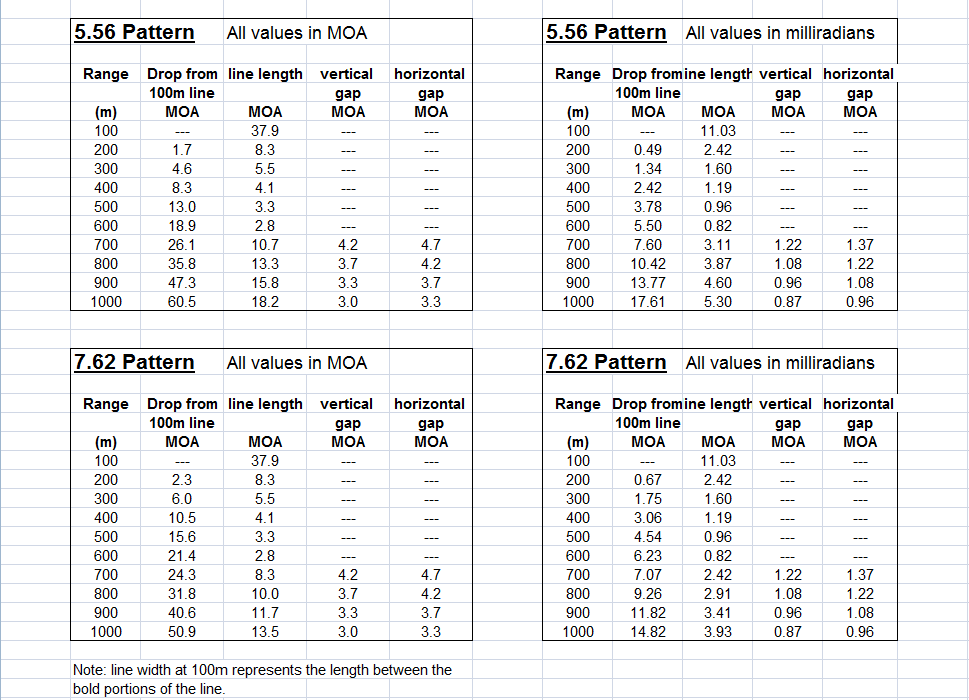Yeah you could certainly argue that it's splitting hairs, realistically not everyone has 19" shoulders anyway and the method of horizontal autoranging is inherently imprecise.
I am wondering though...where exactly did Strelok get their data? It looks like it may be from here:
Hopefully, Took me a while to get this data. Thought I would pass this data long in the hopes of assisting someone who might also be looking for it. I was able to get the correct ELCAN reticle data for the Specter DR series opics both 1-4x and 1.5-6x. My hope is to be able to get it added...

www.fnforum.net
There's an issue with that, though: The 7.62 data doesn't seem to make any logical sense from visual observation. Here is my 7.62 Elcan, for demonstration.
The post claims that the 600m and 700m aiming points are only 2.9 MOA apart, while the 300m hashmark is 6 MOA below the center dot. This seems wildly inconsistent with the photo of the actual reticle - it would suggest that the dot and the 300m hashmark should be further apart than the 600m stadia line and the middle of the 700m circle.
We also know that the 300m hashmark should be about 5.5 MOA wide, but it is wider than the distance between the center dot and the 300m hashmark!
At a glance, it appears these numbers are more accurate, simply extrapolating off the size of the 300m VSOR indicator (which should be about 8.73 MOA tall, as it is 30" @ 300m).
300: 4.6 MOA
400: 8.1 MOA
500: 12.3 MOA
600: 17.3 MOA
700: 24.3 MOA
800: 32.6 MOA
900: 40.5 MOA
1000: 51.0 MOA
These are all very approximate, but they are about the best I can do by eye.
I can do a quick sanity check on the 5.56 reticle later if I have the time.
Edit: I took a look at the fnforum post again and found that the numbers for the 700-1000m area circles actually agreed shockingly well with my own measurements. I wasn't even referring to that spreadsheet at all - it just happened by chance. So I guess something is correct, somewhere.
Everything
inside of 700m, though, is quite different. I'm pretty sure that at least my 300m hashmark measurement is the more accurate of the two, as it agrees better with basically every reticle element with a known size (e.g. hashmark width, VSOR rangefinder, 1.5 MOA circle).


